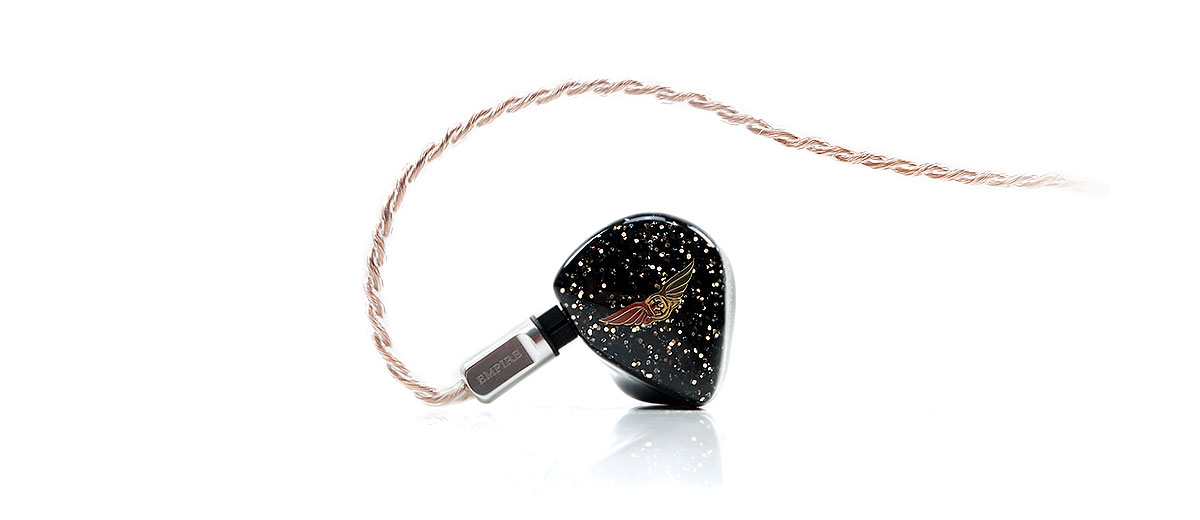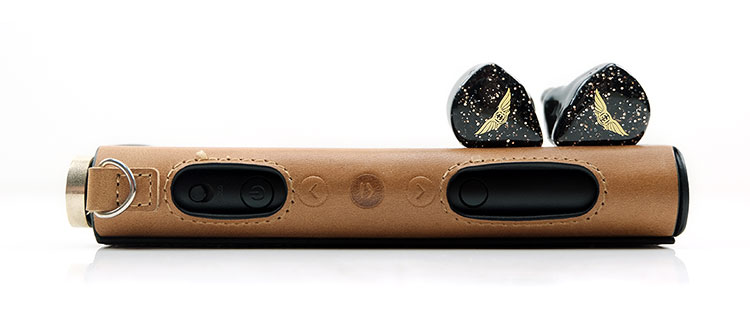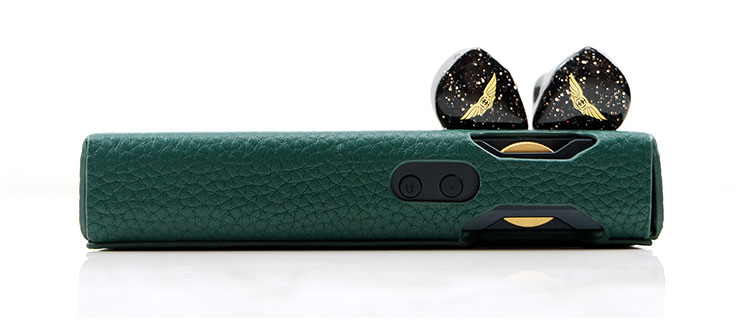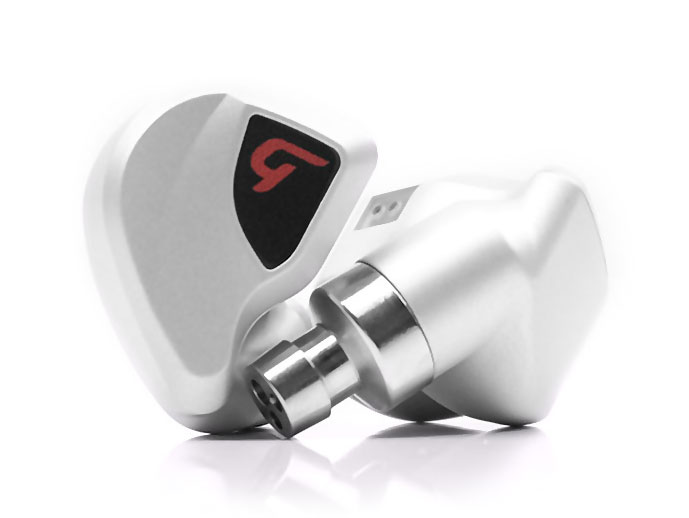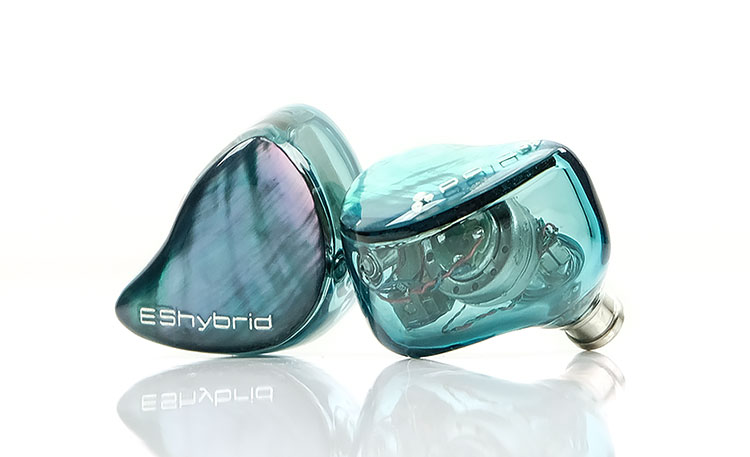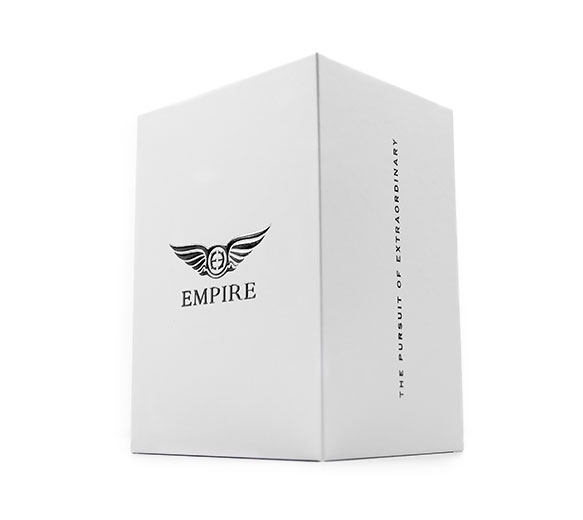Sound Impressions
Summary
The Bravado MKII is more Valkyrie MKII than ESR MKII. It is designed for fun with some obvious coloration that makes it a powerful match for a lot of modern pop, EDM, and some rock genres.
This is a basshead delight with a huge low-end presence, a moderately forward head voice or high-pitching vocal delivery, and a relaxed but clear-sounding treble performance. It is designed to sound gut-wrenchingly powerful but at the same time a little less on the treble energy for a more forgiving smoother tone.
As the bass dominates, the lower-mids do not but I don’t think that should be a surprise to anyone. This is an FR response heavy on a sub-bass bias with a long and sustained drop to just under 1k to keep a cap on any excess energy and prevent it from sounding muddy.
Up to that point, you could say it is fairly ‘L-shaped’ with mid-bass secondary to sub-bass and upper bass below that before it hits it most dipped point around 700Hz to 1k.
Still, the level of mid-bass amplitude is high enough to inject decent warmth into the Bravado MKII tone. Combine that with a moderate treble presence (2-3dB lower than its mid-bass 100Hz peak) and you get a midrange that is neither spikey nor overly cold sounding.
From 1-5k the Bravado MKII actually has some decent elevation so anything falling into this region, including vocals, is going to get a push forward though not quite to the extent of the Valkyrie MKII’s stronger upper-mids lift which sounds more vivid with better separation.
Lower-mids vocals, chest voicing, or guttural death growls will lack a bit of distinction though given this is the lowest point in the FR of the Bravado MKII and in the shadow of its bass dominance.
Timbre
I can’t classify the Bravado MKII as a typically v-shaped monitor despite its low-end Weapon IX+ physicality. It lacks a forward and aggressive treble performance from those EST drivers with the strongest 7-8k peak only around 1-2dB above the mids highest point.
That means you do not get a v-shaped high-contrast approach with a timbre more on the even-harmonic smoother side with just a smidgen of upper-order harmonic lift to prevent it from sounding dark or overly rounded.
The clarity from the EST drivers is very good though, they do not sound like they are struggling to be heard. Rather they do not overpower the mids and create an overtly harsh overtone on head vocals and percussion. The Bravado MKII is not a sibilant or splashy-sounding monitor.
When implemented correctly I do believe EST treble timbre is more satisfying and articulate compared to BA tweeters implemented purely for highs.
On the low-end, the fundamental is huge and that does help compensate for the lower-mids lack of sustain or body in instrument notes. You get a powerful response for kickdrums, double bass plucks, and bass synths. The Weapon IX+ is an excellent driver so bass timbre is dominant but pleasingly articulate with good layering and a nice level of definition.
Staging
The Bravado MKII’s calling card is depth and power with a more moderate level of width and height. The vocal presence will also vary depending on its pitching.
If it’s female vocals or a head voice with plenty of falsetto it is going to come more to the fore with a decent level of immediacy combined with a very nice harmonic balance that is pleasing rather than abrasive. Once it drops down to 1k, say baritone or bass with heavier chest vocalizations, it is more muted and has to compete a lot harder with the more elevated bass presence.
It is really the fundamental that hits the hardest in the Bravado MK II staging with a very forward sub-bass presence drawing your ears to powerful instruments where weight is key. Bass guitar, double bass plucks, synth bass, and kickdrums are all going to sound more forward than standard electric guitar solos.
Percussion presence is good without being overbearing and almost in line with upper-mids vocal delivery in terms of imaging. I do find the Bravado MKII to be quite good for air overall despite its elevated bass response.
Mids through to the treble offer better than expected clarity and I suspect that additional BA for the mids is an important barrier between the Weapon IX+ power and EST delicacy. Monitors which stretch the dynamic driver further up to their EST drivers such as the POLA39 seem a little less coherent to my ear.
Synergy
Efficiency
The Bravado MKII is rated at just 4Ω and 99dB SPL so low voltage sources are definitely not an issue. Recent DAPs with sub-1Ω are unlikely to lead to any impedance skew though to be fair, the Bravado MKII’s dynamic driver shouldn’t be as sensitive to this as BA designs.
We tested 5 DAPs with the Bravado MKII, the FiiO M15, Lotoo’s PAW Gold Touch, the LP P6, HiBy R8, and the iBasso DX300. All 5 DAPs with the stock cable delivered a very low noise performance and easily drove the Bravado MKII in low-gain mode with medium volume levels.
You will find this monitor a lot less sensitive to volume hikes than the likes of the Campfire Audio Solaris or some of the Vision Ears all BA line-ups so hiss is not an issue.
Pairings
The best pairing will ultimately depend on whether you want to emphasize the bass or produce a slightly more balanced performance out of the Bravado MKII. I cannot think of a reason why you would buy it if teasing out the bass was not your thing.
Sources such as the HiBy R8 and the P6 probably push the bass performance the most with the R8 offering the most quantity but the P6 adding the best quality of texture and layering.
I personally would pick the P6 for just how well it can max out both the physicality and definition of the Bravado MKII bass response. However, the R8 is a cheaper pairing with some excellent body and a bit more weight.
The DX300 extends very well also with a very spacious and deep sound out of this pairing. However, the bass feels a little more politely presented like that of a SET bass than solid-state with more of a relaxed but very wide approach through the mids. I personally would prefer a bit more urgency and punchier tone from this pairing.
The FiiO M15 gave me a much cleaner delivery, excellent separation and more extension and energy in the upper mids and treble compared to the aforementioned DAPs. I quite liked the Bravado MKII paired with the M15 in terms of clarity and separation but I do admit the bass weight took a bit of a hit.
The Lotoo PAW Gold Touch probably gave me the best of both worlds with a stronger bass presence and a slightly beefier and more rounded midrange from the Bravado MKII. Treble was also on the right side of neutral with a decent level of headroom.
Select Comparisons
Gaudio Clariden
€749
Technical
For in and around the same price as the Bravado MKII you can have a slice of Swiss manufacturing with the triple driver Gaudio Clariden universal monitor. We reviewed this back in June of last year alongside the neutral tuning of Gaudio’s Nair alternative. I have to say, both are stylistic with a charming but discreet sales pitch.
Inside, the Clariden uses a Sonion and Knowles infused triple BA driver design with a 3-way passive crossover and a triple acoustic path system. The configuration is 1 for the lows, 1 for the highs, and 1 for the mids. A relatively minimalist pitch in typical Swiss fashion compared to the tech ‘bomb’s dropped by EE for the Bravado MKII.
That includes 4 drivers, 3 different types including their Weapon IX+ dynamic for the lows, a single BA, and dual EST drivers with EIVEC tech for the highs. The crossover is much more complex with the 6-way synX and the use of their A.R.C. technology for damping.
The Clariden is rated at 25Ω which is a lot higher than the 3Ω rating of the Bravado MKII but in truth, neither are that hard to drive. The Clariden has no official SPL rating but compared to the Bravado MKII it does not require as much current. Neither are prone to background hiss from higher noise floors.
Design
Different design philosophies here with the Bravado MKII bigger but lighter and the Clariden smaller but heavier. The weight of the Clariden comes from the beautifully crafted CNC Aluminum with clean lines and a smooth silver anodized finish. This is one of the few aluminum monitors with aggressive contouring also so the fit is just as good as the Bravado MKII.
The Bravado MKII has a much darker more aggressive aesthetic with that deep field speckled finish and all-black hollow-body acrylic shell. The acrylic materials make this a lighter monitor in the hand or the ear.
Both monitors use Final E as their stock tip but the longer Clariden nozzle combined with the lack of venting makes it a superior monitor for isolation. The Bravado MKII comes close but the venting does allow a little more low Hz noise in.
Both have excellent cables with the Clariden using a Satin Audio Hyperion and the Bravado MKII using the Alpha IV. The Hyperion is a 1.2m 28AWG wire using SP-OCC Pure SPC Type 2 Litz geometry, a nylon damping core, an audio grade Cardas Audio Quad Eutectic Solder finish, and a PEEK jacket.
The Alpha IV might be a bit further up the ladder though with its larger 26AWG 4-wire multi-size UPOCC Litz copper strand geometry cable. The Alpha IV terminations are also a step up on the older EA-type short barrels of the Hyperion with a tighter braiding finish.
Performance
Both the Clariden and the Bravado MKII are going for the base hits so to speak with stronger bass and more prominent upper mids to tease out the fundamental and vocal presence for modern pop and rock. However, the degree of which and the timbre of different drivers delivers quite a different performance.
The BA driver on the low-end of the Clariden does not hit anywhere near as hard as the Weapon IX+ dynamic driver inside the Bravado MKII. It has that distinct lighter BA hit and texture though for a BA it hits quite well.
The Weapon IX+, however, has much more sub-bass power and bias so it is the more dominant frequency range in the Bravado MKII tuning with more texture, a slower decay but heavier fundamental.
The lighter touch of the Clariden allows for a bit more lower-mids presence and a degree of clarity in the midrange. Both do have some elevation and a forward vocal sound, however, the Clariden peaks just a little more around 3k whereas the sustains all the way from 2-5k.
The Clariden actually drops from 4-6k sucking a bit of air and presence out compared to the Bravado MKII. There is some compensation with a heavier 8-10k presence from the Clariden and this is the weak point for me. I find the Bravado MKII timbre a bit more natural in tone, more even, and easier to listen to with its even treble tuning.
That 8-10k peak of the Clariden is pushing the BA driver quite hard making it harsher sounding and coloring the upper mids and vocal tone with some harmonic dissonance. It sounds a little off to me.
SHOZY & AAW POLA39
$950
Technical
The POLA39 is also a 2nd generation hybrid monitor with a hybrid mix of drivers. Inside, the POLA39 uses a 13mm Graphene (carbon allotrope) dynamic driver and dual electrostatic tweeter hybrid design with a TrueXross 2-Way Crossover.
The biggest variance is the lack of BA in the POLA39 configuration. The Bravado MKII uses a smaller 9mm Weapon IX+ dynamic driver and dual EST drivers for the highs. However, it bridges the two driver types with an additional single BA for the mids as well as using a far more complex 6-way synX crossover to phase them.
Current requirements for the POLA39 and the Bravado MKII are quite similar on paper with the Bravado MKII rated at 99dB SPL and the POLA39 at 101dB. Both have low impedance ratings at 12Ω for the POLA39 and 4Ω for the Bravado MKII.
In our testing, we felt the POLA39’s dB sensitivity rating might be too generous as it needed 1-2dB more volume to match the Bravado MKII in low-gain SE output mode on the Lotoo PAW Gold Touch.
Design
In terms of aesthetics, both of these monitors have stylish but quite unique acrylic hollow-body designs.
The POLA39 has a translucent turquoise/pale green acrylic 3-piece build consisting of the main shell, Mother of Pearl faceplate, and a stainless-steel nozzle. The Bravado MKII opts for a darker black acrylic body and base plate design with the deep field suspended metallic flake finish on top.
The big difference between these two is the form factor. The POLA39 is a fair bit smaller compared to the Bravado MKII. Both have similar aggressive contouring but the Bravado MKII’s nozzle is longer making this a taller monitor. That means the EE creation can penetrate a bit deeper into the canal and isolate marginally better than the POLA39.
Both have excellent cables with the POLA39 using a 48″ Symphonym Tiburon UP-OCC Copper Cable Litz 4-wire cross-braided in a very supple translucent PVC jacket. The Bravado MKII also uses a copper wire with its 26AWG multi-size UPOCC Litz copper strand geometry Alpha IV cable.
The one difference between these two cables is weight. The Tiburon is much the heavier of the two due to the bigger solid splitter barrel compared to the lightweight clasp of the Alpha IV.
Performance
The POLA39 has a bit more of a dynamic driver/EST contrast in its timbre and tuning compared to the more coherent and slightly more natural-sounding Bravado MKII. Transitioning to BA then EST seems to work better for me than dynamic to EST where the highs sound a little peakier and thinner in tone. You can easily pick out the transition from dynamic to EST on the POLA39.
Now I do like the extension on the POLA39 and it is so much better than the original POLA sounding a lot more coherent with that smaller 10mm dynamic driver not as dominating or as dipped in the lower-mids.
However, the POLA39 mids still sound a little more neutral in positioning and presence compared to the very forward Bravado MKII tuning. EE has really gone for the key points in where your listening tends to focus on, bass fundamentals and vocal presence and just eased off a little on the treble aggression.
The POLA39, in contrast, does have the brighter more aggressive top-end with a more energetic EST performance but the low-end is less distinct, less powerful in terms of sub-bass presence, and little bit more to the mid-bass punchy side. The Bravado MKII certainly has the better depth but cedes to the POLA39 for height.
The final point is a technical point. I got a feeling the dynamic range on the Bravado MKII was a bit better than the POLA39. It sounded like I was hitting an artificial wall for soundwaves whereas the Bravado MKII was breathing a lot easier and thus more open sounding.
DUNU DK-4001
$899
Technical
The DUNU DK-4001 is a hybrid universal monitor we reviewed back in 2019 and at the time it was their flagship hybrid IEM.
The DK-4001 consists of a single 13mm beryllium coated dynamic driver for the lows and mids and 2 x dual-tweeter Knowles SWFK-31736 for the highs and ultra-highs using a 2-way crossover.
The Bravado MKII keeps the Weapon IX+ dynamic driver primarily for the lows and instead deploys a BA for the mids and dual EST for the highs and ultra-highs with a 6-way synX crossover. You could argue the DK-4001 does its major ‘lifting’ via the larger dynamic driver whereas the Bravado MKII drivers have a narrower focus.
In terms of paper specs, the DK-4001 is rated at 32Ω with an SPL of 112dB so its needs a bit more voltage but less current compared to the 4Ω and 99dB SPL rating of the Bravado MKII. That will be primarily due to the EST drivers needing a bit more energy to make those EST drivers sing compared to BA or dynamic.
In our testing, the Bravado MKII did need a bit more volume via SE outputs on our test DAP, the Lotoo PAW Gold Touch though neither have any issues with background hiss on our second DAP, the FiiO M15.
Design
The DK-4001 is tiny compared to the Bravado MKII. This is a sort of a throwback design to IEMs several years ago but it’s also a classic DUNU form factor with that hefty rear MMCX terminated stem and round body finish.
The materials are excellent with the use of sandblasted matte-black zirconium liquid alloy so despite its tiny size, it weighs a little more than the Bravado MKII’s larger but lighter custom universal acrylic design.
The DK-4001 size does mean quite a lot of emphasis is placed on the tips doing the proper sealing with the supplied foams doing a decent job but not on the same level as the Bravado MKII deeper nozzle and Final E Tips. Switching to Final E tips on the DK-4001 closes the gap somewhat but still not quite as good for low Hz noise.
The DK-4001 does have one distinct advantage and that is its Noble cable system. The Noble cable is 1.2m long consists of alternating strands of Furukawa sourced OCC Copper and DHC pure silver wire in a 4-wire build. The Alpha IV is a 26AWG multi-size UPOCC Litz copper strand so in terms of wiring they are on the same level.
Rather, the termination system with the detachable jacks makes the Noble cable such a cool accessory. You can switch from 3.5mm, to 2.5mm and 4.4mm with the same cable whereas the Alpha IV has only one jack. To change that you need to buy an adapter.
Performance
The Bravado MKII is more v/u-shaped with a stronger bass/treble emphasis and also a more forward upper mids tuning. The DK-4001 is comparatively more relaxed sounding with a gentler but still very nicely extended low-end and a slight sub-bass emphasis.
Both have a strong dynamic driver timbre up to the lower mids. However, the DK-4001’s configuration means it continues with the dynamic driver tone through the mids whereas the Bravado has more separation between the dynamic driver and the mids BA.
You get more of a lower-mids dip on the Bravado MKII and a cooler cleaner sound as a result whereas the DK-4001 has more lower-mids presence and a bit more warmth. The Bravado MKII underlines instrumental timbre with a stronger fundamental and kicks really hard as a result whereas the DK-4001 is a little more controlled for outright power but with more mids body.
The upper mids and treble are quite different on these two monitors. The Bravado MKII has more headroom and more forward upper-mids also. The DK-4001 fades faster from around 6-7k with a stronger 2-4k dip. Vocals have some decent presence on the DK-4001 and sound smoother but they are not as forward or as clean as the Bravado MKII.
I would pick the DK-4001 for rock standards where you might want a bit more flexibility and a forgiving listening experience. The Bravado MKII is my pick for power and excellent synergy for modern EDM, pop, and R’n’B.
Our Verdict
This is the monitor I would pick for an out-and-out basshead. It perfectly matches modern EDM, synthwave, and R’n’B’s demand for a floor-dropping sub-bass presence but at the same time, it avoids a harsh treble counter so whilst energetic this is not a fatiguing sound. It is just a pure fun experience.
The design has plenty of trickle-down from the higher-end models also. That means a super comfy fit, excellent levels of isolation for a bass vented monitor, and a top-notch stock cable choice with the Alpha IV.
Overall, the Bravado MKII is like an initial welcome to the Empire Ears ‘power game’ and is probably one of the hardest hitting monitors sub-$1k I have heard lately. There is quite a lot of tech stuffed into that Bravado MKII shell also for the price so the value is actually very good.
Empire Ears Bravado MKII Specifications
- 4 Proprietary Drivers, Tribrid Design
- 1 Next Generation W9+ Subwoofer – Sub-Bass/Bass
- 1 Proprietary Balanced Armature Driver – Mid
- 2 Premium Electrostatic Drivers – 1 High, 1 Super-High
- 6-Way synX Crossover Network
- EIVEC – Empire Intelligent Variable Electrostatic Control Technology
- A.R.C. Resonance Mitigation Technology
- Impedance: 4 Ohms @ 1kHz
- Frequency Response: 5 Hz – 100kHz
- Sensitivity: 99dB @ 1kHz, 1mW
- Bespoke Alpha IV UPOCC Copper Litz Cable




